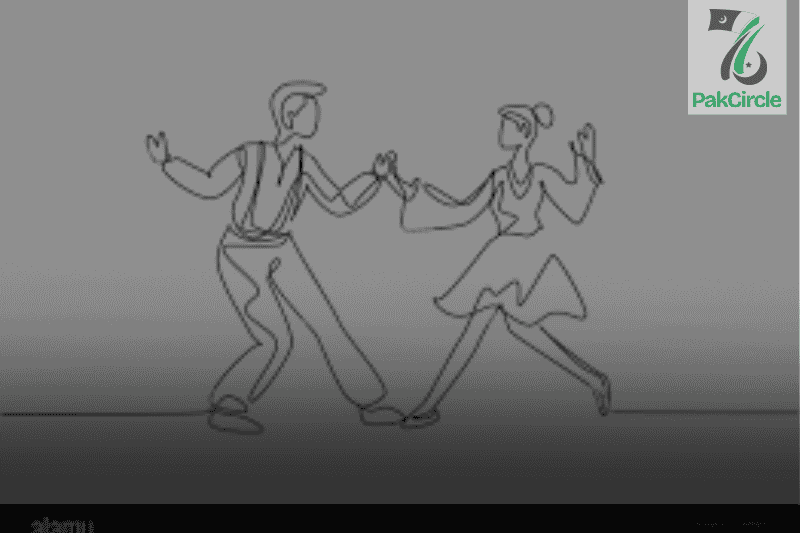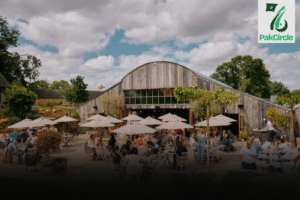For thousands of years, humans have danced—not just for celebration, but to tell stories, pass down traditions, and connect as a community. Among the many dance forms that have stood the test of time, one structure carries with it a deep sense of unity, respect, and rhythm: the dance where men and women form parallel lines. This simple yet powerful formation transcends borders and languages, symbolizing equality, conversation, and a mirrored exchange between genders.
Whether it’s the joyful Kalamatianos of Greece, the synchronized Contra dances of New England, or the spirited Bhangra variations of Punjab, this dance style highlights coordination, symmetry, and togetherness. The lines are not just steps—they are symbols of cultural continuity and human connection.
Famous Parallel Line Dances Around the World
| Country | Dance Name | Formation Style | Primary Occasion | Music Tempo (BPM) | Costume Elements |
| Greece | Kalamatianos | Men and women in lines | Weddings, festivals | 120–150 | Vests, flowing dresses |
| USA | Contra Dance | Facing lines | Community gatherings | 100–130 | Colonial, casual folk outfits |
| Serbia | Kolo | Circle & line variations | National celebrations | 90–120 | Embroidered folk attire |
| India (Punjab) | Bhangra | Line formations in teams | Harvests, weddings | 140–160 | Turbans, vibrant salwar kameez |
| Israel | Hora | Circle or parallel lines | Weddings, national events | 110–140 | Skirts, sashes, embroidered tops |
| Turkey | Halay | Mirrored or side lines | Festive ceremonies | 110–135 | Colorful headscarves, waistbands |
What Is the Dance Where Men and Women Form Parallel Lines?
The formation is visually striking. Two rows—one of men, one of women—face each other. Sometimes they hold hands, other times they dance free-form, yet the movement is always synchronized. Dancers take steps forward and backward, often in mirror-like motion, creating a dynamic rhythm of approach and retreat.
At its heart, this formation reflects conversation, coordination, and respect. The symmetry is not just for aesthetic—it’s an embodied symbol of balance between genders, roles, and tradition.
The History Behind This Formation
H3: Prehistoric Roots
Long before organized choreography, tribal societies danced in groups—men and women often segregated by cultural norms but still dancing in rhythm, side-by-side. These early dances mimicked nature, seasons, and even animal movements. Over time, gender-based parallel formations became common in rituals involving courtship, war preparation, and harvest festivals.
H3: Medieval and Early Modern Societies
In European societies during the medieval and Renaissance periods, dances like English Country Dance and French Contredanse flourished. These eventually evolved into Contra dancing in New England. The setup remained consistent: two lines, one for men and one for women, moving in concert to live music.
In Eastern cultures, the concept of men and women dancing together—yet still separate by lines—served cultural and religious purposes. It provided a way for men and women to participate in dance without breaching social codes.
Cultural Significance Across Regions
While the steps may differ, the underlying purpose of these dances remains universal: unity, communication, and expression.
Greece – Kalamatianos and the Legacy of Celebration
Kalamatianos is one of the most popular Greek dances. Although often performed in a circular line, festivals and weddings frequently adapt it to a parallel line structure, with men and women facing each other and exchanging steps. Each dancer mimics the energy of their counterpart, creating a mirror-like effect that symbolizes equality and joy.
United States – Contra Dancing and Community Bonding
In colonial America, communities gathered weekly for Contra dances. These events served not just for entertainment, but as social mixers, especially for young people. The mirrored structure of the dance made it easy to engage multiple partners throughout the evening, forming new connections.
India – Bhangra’s Structured Line Variations
Traditional Bhangra doesn’t strictly conform to parallel lines, but many of its celebratory versions—especially in modern wedding performances—use this structure. Men and women dance in opposite lines, advancing and retreating with high-energy footwork that turns the event into a colorful spectacle of motion.
Israel – Hora’s Evolving Form
Although the Hora is typically circular, in group performances—especially during national events or weddings—it often morphs into facing lines for visual appeal and space efficiency. The parallel version still embodies the Hora’s essence: unity, movement, and festivity.
Symbolism Behind the Lines
What makes this dance formation so enduring?
- Balance: Men and women face each other as equals, symbolizing unity.
- Dialogue: Steps and gestures represent an ongoing “conversation” between the lines.
- Tradition: Many of these dances are passed down through generations.
- Ritual: Weddings, harvests, and festivals all rely on such dances to mark milestones.
In many ways, these dances tell stories of love, loss, war, renewal, and human resilience.
Learning the Dance – A Step-by-Step Beginner’s Guide
If you’re eager to experience a dance where men and women form parallel lines, here’s how to get started:
Step 1: Choose Your Style
Pick a regional dance that appeals to you. Some are slow and ceremonial (like Kolo), while others are fast-paced and energetic (like Bhangra or Contra).
Step 2: Understand the Rhythm
Listen to traditional music associated with the dance. Focus on:
- Tempo (beats per minute)
- Rhythmic patterns (3-step, 4-step, etc.)
- Instrumentation (drums, fiddles, flutes)
Step 3: Learn Basic Steps
Every parallel line dance follows repetitive steps. Start with simple movements like:
- Step forward, step back
- Side steps with hand movements
- Spins or stomps on specific beats
YouTube and platforms like DanceDojo offer great visual tutorials.
Step 4: Practice With a Partner or Group
Since this dance relies on mirroring, it’s best practiced with at least one other person. As you improve, try dancing with a full group to capture the true energy.
The Emotional Experience of Line Dancing
People often describe these dances as healing. There’s a reason:
- Inclusivity: Anyone can join, regardless of skill.
- Connection: Eye contact and synchronized motion foster deep bonds.
- Stress Relief: Repetitive movement to rhythmic music helps reduce anxiety.
The act of stepping in rhythm with others can evoke strong feelings of belonging and celebration.
Modern Relevance in a Digital Age
In a world of smartphones and solitude, group dances are making a comeback:
- Flash mobs frequently use line-based choreography.
- School cultural programs teach folk dances to children.
- Fitness dance classes use mirrored steps for better engagement.
Even TikTok trends reflect this format—one line records, the other responds.
Costumes and Cultural Dress Codes
Clothing plays a huge role in these dances. Costumes often:
- Reflect regional identity
- Use bright colors to enhance movement visibility
- Include gender-specific elements to emphasize contrast between lines
In Serbian Kolo, for instance, women wear long skirts with embroidered belts, while men don vests and sashes. The aesthetic enhances the visual symmetry of the dance.
Where to Experience or Watch These Dances
You don’t need to travel far—many organizations showcase traditional dances in local festivals or online. Some options include:
- Greek Festivals (held globally)
- Balkan Folk Dance Clubs
- Israeli Cultural Centers
- Punjabi Wedding Dance Performances
- Contra Dance Nights in the US and UK
Websites like FolkDanceFederation.org offer directories of events and classes worldwide.
Conclusion:
The dance where men and women form parallel lines is not just a visual spectacle. It’s a cultural treasure, a mirror of society, and a reminder that harmony is possible—when we move in rhythm with each other. Whether you’re dancing at a wedding, watching a folk show, or participating in a local festival, the magic of these mirrored steps is universal. So the next time you hear that drumbeat or the swirl of a violin, don’t just watch—take your place in the line. Face your partner. Step forward. And become part of a story that’s been dancing its way through centuries.
Read More:
https://pakcircle.pk/adapted-books-for-special-education/
https://pakcircle.pk/benefits-of-christian-education/
https://pakcircle.pk/benefits-of-classical-education/
FAQs
Q1: Why do men and women form separate lines?
To reflect traditional roles and storytelling balance—though today, gender is more fluid in modern performances.
Q2: Can these dances be done solo?
Most require a group, but practicing solo footwork is common.
Q3: Are these dances religious?
Some originated in rituals, but most are now cultural and secular.
Q4: Where can I learn these dances online?
YouTube, Dance Dojo, and folkdance community sites offer tutorials.
Q5: Do you need to wear specific costumes?
Not necessarily, but they enhance the experience during public performances.
Q6: What age group can participate?
All ages—from children to the elderly—often dance together.
Q7: How do these dances preserve culture?
They keep oral traditions, songs, and values alive through movement.








